 Party Switchers Leave the Major Parties
Party Switchers Leave the Major Parties
Summary
Since 2013 Republicans and Democrats have each lost a similar net number of voters.
The major cause of people leaving parties appears to be the introduction of open primaries.
The election of President Trump has led to an increase in Republicans leaving the party.
President Trump’s nomination led to an increase in Democrats joining the Republican Party.
Before and after President Trump’s nomination, there has been a steady trend of Democrats leaving their party to become Republican.
The trend of Democrats switching to Republican is mostly driven by women.
The Numbers
Party Switchers Head for the Exits
Colorado party switchers have been slowly leaving the two major parties for some time. However, this trend has both accelerated and become more sustained since 2016.
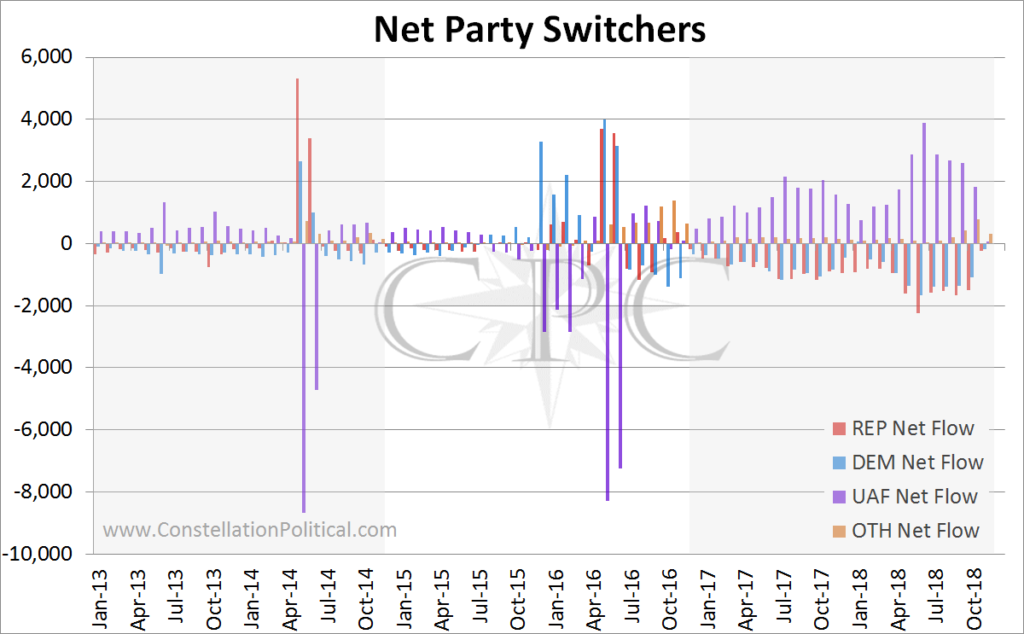
Graph 1 shows the net number of voters who switched into a party each month since January 2013. These figures do not include new registrations, only those who changed parties.
For example, the ‘net flow’ for the Republican Party is the total number of voters who changed their registration to Republican from another party minus the total number of voters who changed their registration from Republican to another party. A positive net flow number means more people joined that party than left it. If the net flow number is negative it means more people left that party than joined it.
Previously, the biggest net flow figures were the negative flows for Unaffiliated voters that used to occur just before the primary elections. This year, however, there was no spike in Unaffiliated voters joining a party because party registration is no longer required for participation in primaries. At the same time, the net flow of people leaving both major parties increased.
Table 1 shows the average net flow for the two major parties for three key timeframes: the run-up to the 2016 election, the 2016 general, and post-2016.
The net flows for both the Republican and Democrat parties were quite small prior to 2016. On average 72 people were switching their party to Republican each month and 47 people were switching their party away from Democrat. The 2016 presidential election brought an increase in party switchers joining both major parties to participate in the primary process. But right after the election, 2016 party switchers began leaving both major parties in significant numbers.
There are two theories on the increase in voters leaving major parties and both focus on the 2016 election. In 2016, Colorado adopted open primaries. Now voters no longer need to affiliate with a major party to participate in their primary. The other theory is that President Trump drastically altered the traditional political landscape of the two major parties.
Party Switchers Flee Trump
One theory to explain the increase in party switchers leaving the Republican Party is that President Trump has alienated traditional Republicans and driven them out of the party. And this appears to be true.
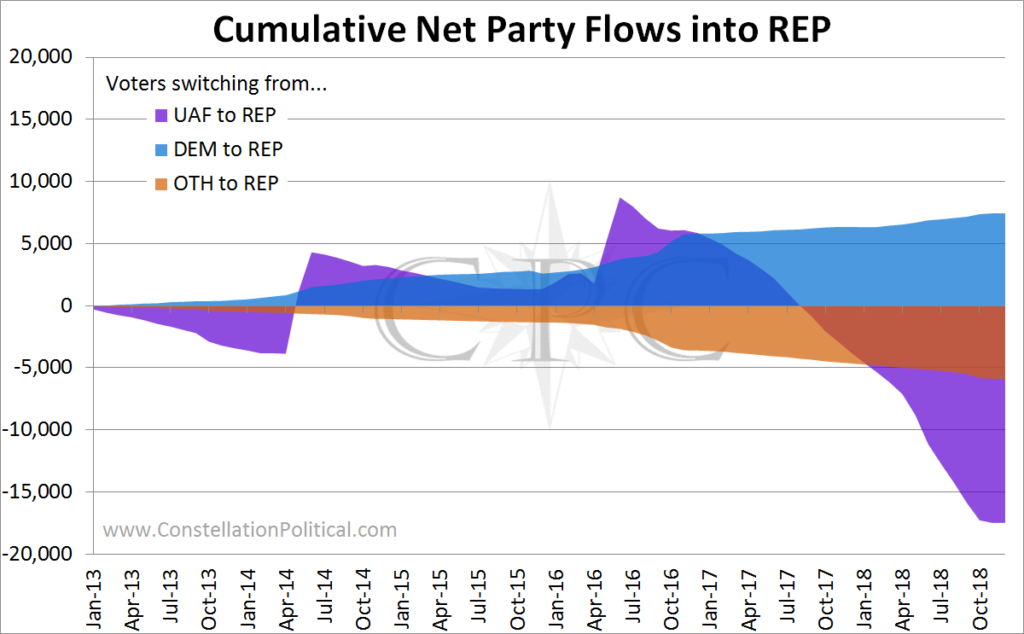
Graph 2 shows the cumulative flow of party switchers to and from the Republican Party. Between January 2013 and June 2016, 8,728 net Unaffiliated voters changed their registration to Republican. However, between January 2013 and November 2018 negative 17,487 net Unaffiliated voters changed their registration to Republican. Put another way: 17,487 Republicans have left the party to become Unaffiliated.
June 2016 was the high-water mark for Unaffiliated voters joining the Republican Party. This is likely because this was the last time they had to join the party to participate in the primary. Since June 2016, Republicans have been steadily leaving the party to register as Unaffiliated. Republicans had 17,487 voters switch to Unaffiliated in the time period we are considering.
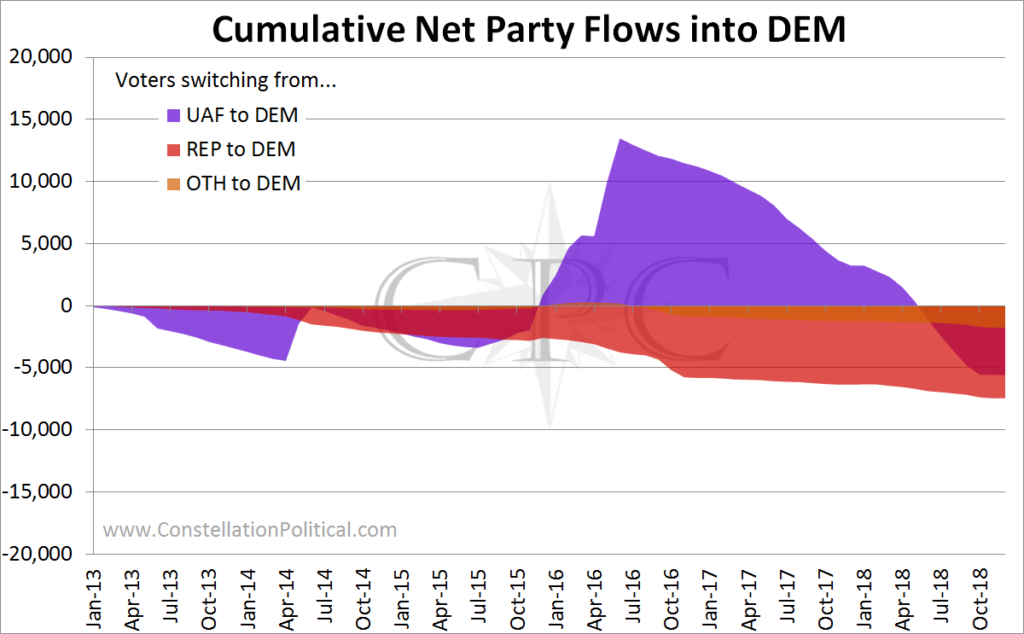
Graph 3 shows the same data for the Democrat party. However, over the same time period the Democrats only had 5,573 voters leave to become Unaffiliated. Republicans were also much more likely to switch to a third party. Republicans lost 5,882 voters to third parties over this time period, versus 1,769 for Democrats.
Comparing these figures it seems clear that the Republican Party has lost some of its luster since 2016. Depending on who you are…
Party Switchers Flee Democrats
A closer comparison of Graphs 2 and 3 reveals something very surprising. Since 2013 there has been a steady flow of Democrats switching to Republican. During that time, 7,448 Democrats have joined the Republican Party.
Democrats have lost voters to each of the other three parties. However, Republican losses to Unaffiliated and Other voters have been offset by picking up former Democrats. When this is taken into account the two major parties net losses have been almost identical. Republicans have lost 15,921 party switchers and Democrats have lost 14,790.
So, who are these Democrats switching to Republican?
Who Are Party Switchers?
While the drift from Democrat to Republican is happening in the places you would expect, it isn’t happening to the people you would expect. Of the net change from Democrat to Republican, it is women driving the shift by a 60-40 majority.
Some of them are definitely supporters of President Trump. If you examine Graph 2 you can see a clear increase in the pace of Democrats switching to Republicans during the 2016 election.
One of the most interesting things about this trend of Democrats switching to Republicans is how consistent it is. Prior to the 2016 election, an average of 72 net switchers were leaving the Democrat party to become Republicans. There was a surge to 288 per month during President Trump’s election. And then the pace dropped back to 70 per month, right where it was before.
This trend is unfolding right where we would expect it to be as well.
Where Are Party Switchers?
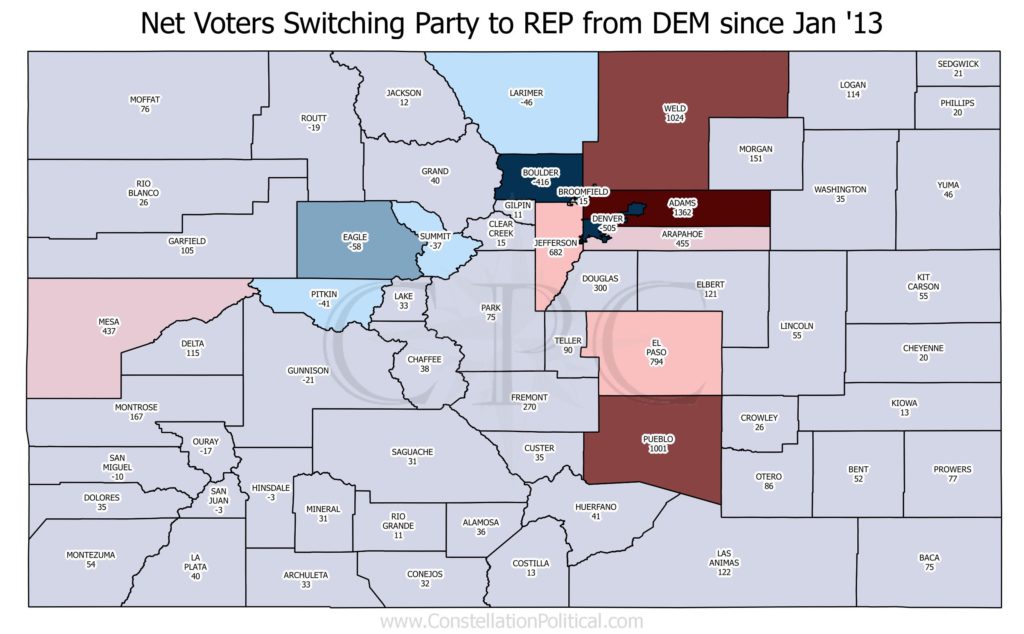
Map 1 shows the total number of Democrats who have switched to Republican in each county. It is not surprising to see that much of this behavior is coming from Pueblo and Adams Counties where Republicans have begun to improve their performance.
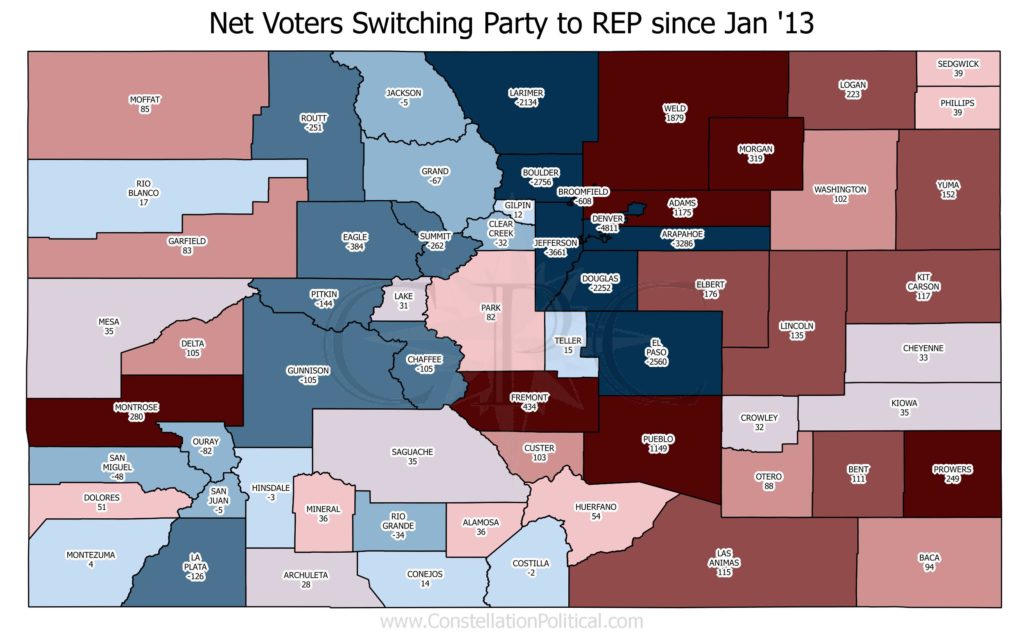
Map 2 shows each counties net number of switchers from any party to Republican. As you would expect, Republicans are doing best on the Eastern Plains and the West Slope. But now, Republicans are making improvements in Pueblo and its surrounding counties as well. Douglas and El Paso counties are areas of concern, however. While Democrats in these counties are leaving to join the Republican Party many more Republicans are leaving the party to become Unaffiliated.
Conclusion
The fact that there has been a sustained increase in voters leaving both major parties since 2016 would point to a cause beyond the conditions of one party or the other. This coupled with the similarity in the net number of voters who have left each party suggests that the switch to open primaries in Colorado has led to permanent reduction in partisan participation.
President Trump is also a clear factor, although not as negative a factor as some would have you believe. The fact that many more Republicans have left the party to become Unaffiliated than have Democrats since 2016 indicates that President Trump is driving some of this desertion within his own party. However, President Trump’s nomination also led to a boost in Democrats leaving their party to join Republicans. This effect coupled with the existing trend in Democrats switching to Republican offset most of the losses caused from traditional Republicans leaving the party.
Party desertion is not a problem unique to Republicans. Both parties have lost comparable numbers of voters over the past three cycles.


